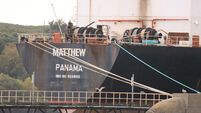Cork and Dublin buildings participate in this year’s Open House initiative

These are not usually open to the public but they will be open in Cork from Friday, September 30, to Sunday, October 2, and in Dublin from Friday, October 14, to Sunday, October 16.
For a particularly satisfying snoop, a house built in the 1930s in O’Connorville, Tower St, Cork, has undergone a major renovation.













